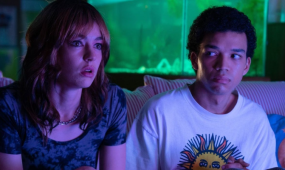The New Boy
Films & TV
“While cinemas have plenty of foreign films screening, mainly of the mainstream blockbuster variety, it is refreshing and worth celebrating that a historical Australian film, continuing the tradition of cinematic storytelling on Australian themes and First Nations matters, gets a decent cinema release around the country,” says The Rev’d Canon Gary Harch

The New Boy is set in outback South Australia in the early 1940s. This dramatic film is a fictional narrative of a captured young desert First Nations boy who is brought to a small orphanage, run by Roman Catholic nuns.
The story is about his interaction with the adults and other children in this orphanage, and we soon learn that the running of the orphanage is complicated. It’s difficult to say much more without ruining the absorbing narrative experience the film offers. It’s the kind of film to let yourself be carried by the story, letting it unfold.
The cinematography captures the essence of the Australian landscape in its many woods — the sunrises, the quiet, the fields and native vegetation are all superbly filmed. The filmmakers made a deliberate choice about how to use dialogue, to good effect. There are strong performances by all the main actors — Aswan Reid as the titular character, Deborah Mailman, Wayne Blair and Cate Blanchett — who ground the film in a sense of realism that heightens the tensions of the new boy’s experiences at the orphanage.
This is Kaytetye writer and director Warwick Thornton’s third feature film (after Samson & Delilah and Sweet Country) and continues his ongoing exploration of Australia’s First Nations histories and cultures. Beyond the film’s concerns with First Nations matters that certainly still resonant with contemporary Australia, there’s plenty for audiences to reflect on in terms of the film’s grappling with Roman Catholic theology and the affect World War II had on agricultural Australia.
Advertisement
One surprising feature is the way Thornton depicts the boy’s spirituality — using light coming from the boy’s hands. This is obviously a Christian metaphor. Perhaps one key question anglican focus readers and others might like to ask themselves upon leaving the cinema is, “What do you think this part of the movie meant, for Christianity, for First Nations cultures?”
Given how the second half of the movie progressed, the ending was probably a good outcome, leading us into further reflection. Don’t expect loose ends to be tidied up — art and life can be messy.
What might this movie add to the public discourse on Reconciliation? Anyone familiar with the complicated history of the Churches’ complicit involvement with so-called missions and the Stolen Generations will see familiar themes in this movie. It may be a fictionalised account with a historical basis, but there is a compelling sense that what you’re watching is an emphasised version of what was the norm for life in 1940s Australia. While much has changed since then, we know that there are still large gaps to close, such as in education and health, between First Nations and non-Indigenous Australians.
Advertisement
While cinemas have plenty of foreign films screening, mainly of the mainstream blockbuster variety, it is refreshing and worth celebrating that a historical Australian film, continuing the tradition of cinematic storytelling on Australian themes and First Nations matters, gets a decent cinema release around the country.
I came away from the movie very pleased I had seen it and it left me with many questions and more research to conduct about the film’s setting and ideas.
The New Boy, rated M and directed by Warwick Thornton, is currently showing in cinemas.





